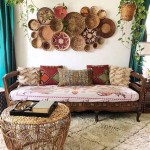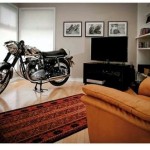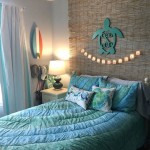How To Decorate Your Home Screen For Free
The home screen of a smartphone or tablet serves as a digital gateway, offering immediate access to frequently used applications and essential information. Customizing this interface can enhance user experience, making device interaction more intuitive and visually appealing. While numerous applications and premium features offer advanced customization options, achieving a personalized and aesthetically pleasing home screen does not necessitate financial investment. This article will explore various methods for decorating a home screen without incurring any costs.
The default settings of most operating systems provide a foundation for basic customization. Users can typically adjust wallpaper, icon arrangement, and widget placement directly through the device's settings menu. Leveraging these built-in features is the first step in creating a personalized home screen experience. The key lies in understanding the available functionalities and creatively applying them to achieve desired aesthetic results.
Utilizing Free Wallpaper Resources
Wallpaper constitutes a dominant visual element of the home screen. Substituting the default wallpaper with a personalized image or a visually appealing graphic can significantly alter the overall appearance. Numerous free resources offer a vast selection of high-resolution images suitable for use as wallpaper. Websites such as Unsplash, Pexels, and Pixabay provide extensive libraries of royalty-free photographs spanning diverse themes, including nature, abstract art, and cityscapes. These images can be downloaded and set as wallpaper directly from the device's gallery or through the device's settings menu.
Beyond websites, certain applications are specifically designed to provide daily or weekly updates of free, high-quality wallpapers. These applications often categorize images based on themes and resolutions, facilitating efficient browsing and selection. Some applications also offer features such as automatically changing the wallpaper at specified intervals, introducing a dynamic element to the home screen. When selecting a wallpaper, it is crucial to consider the visibility of icons and widgets. A cluttered or overly detailed wallpaper can obscure these elements, rendering them difficult to discern. Opting for wallpapers with muted colors or subtle patterns can enhance readability and maintain a clean, uncluttered appearance.
Furthermore, users can create their own wallpapers using free image editing software. Applications such as Canva and GIMP offer basic image editing tools that can be used to design personalized wallpapers. This approach allows for complete control over the design elements, enabling the creation of unique and customized wallpapers tailored to individual preferences. Users can incorporate personal photographs, textual elements, or abstract designs to create a truly personalized home screen aesthetic.
Live wallpapers, which feature animated backgrounds, can also enhance the visual appeal of the home screen. While some live wallpapers require payment, numerous free options are available on app stores. However, it is important to note that live wallpapers can consume more battery power than static wallpapers. Therefore, users should consider the impact on battery life before opting for a live wallpaper.
Organizing Icons and Widgets for Optimal Aesthetics
The arrangement of icons and widgets significantly influences the overall appearance and usability of the home screen. A well-organized home screen promotes efficiency and enhances visual appeal, while a cluttered or disorganized home screen can be distracting and frustrating. Several techniques can be employed to organize icons and widgets effectively without incurring any costs.
Grouping applications by category is a common and effective organizational strategy. For example, all social media applications can be grouped together in a single folder, while productivity applications can be placed in another folder. This approach reduces clutter and allows for quick access to frequently used applications. Creating folders is a standard feature in most operating systems and can be accomplished directly through the device's settings or by dragging and dropping icons onto each other.
Utilizing empty spaces strategically can also enhance the visual appeal of the home screen. Leaving gaps between icons and widgets can create a sense of balance and prevent the home screen from feeling overcrowded. Experimenting with different icon arrangements is crucial to finding a layout that is both visually appealing and functional. Some users prefer a minimalist approach, placing only essential icons on the home screen and accessing other applications through the app drawer. Others prefer to display a greater number of icons on the home screen for immediate access.
Widgets, which provide at-a-glance information and quick access to specific functions, can also be used to enhance the visual appeal of the home screen. Most operating systems offer a variety of free widgets, including weather forecasts, calendars, and news tickers. Selecting widgets that complement the overall aesthetic of the home screen can contribute to a cohesive and visually pleasing design. The size and placement of widgets should also be carefully considered to avoid obstructing other elements on the home screen.
Custom icon packs, although often associated with paid apps, can sometimes be found for free or offered temporarily as part of promotions. These packs replace the default app icons with more stylized or themed versions, creating a unified visual theme across the home screen. Regularly checking app stores for free icon pack promotions can provide an opportunity to significantly alter the home screen's appearance without any financial investment.
Leveraging Built-in Customization Features
Operating systems such as Android and iOS offer a variety of built-in customization features that can be utilized to personalize the home screen. These features are often overlooked, but they can provide significant control over the appearance and functionality of the interface. Exploring and understanding these features is essential for maximizing the potential of the device's customization capabilities.
Android, in particular, offers a high degree of customization through its launcher. The launcher is the application that manages the home screen and app drawer. Many Android devices come with a default launcher, but users can install alternative launchers from the Google Play Store. Some free launchers offer advanced customization options, such as the ability to change the grid size, customize icon labels, and apply themes. Experimenting with different launchers can significantly alter the appearance and functionality of the home screen.
Both Android and iOS allow users to adjust the size and style of text on the home screen. Increasing the text size can improve readability, while changing the font style can alter the overall aesthetic. These settings can be found in the device's accessibility menu or display settings. Adjusting these settings can enhance the usability and visual appeal of the home screen.
The use of color palettes can also influence the overall aesthetic of the home screen. Some operating systems allow users to choose from a variety of color schemes for system-wide elements, such as the notification shade and settings menu. Selecting a color palette that complements the wallpaper and icon colors can create a cohesive and visually pleasing design. Customizing the color scheme can give the homescreen a more personalized feel, making it unique to the user.
Finally, utilizing focus modes or Do Not Disturb settings presents an opportunity to declutter the home screen and minimize distractions. By silencing notifications and hiding non-essential applications, users can create a more streamlined and focused home screen environment. This approach not only enhances productivity but also contributes to a cleaner and more visually appealing aesthetic. Removing the constant barrage of notifications can significantly improve the user experience.
How To Customize Ios Home Screen Like A Pro For Free Beebom

How To Customize Ios Home Screen Like A Pro For Free Beebom

How To Customize Ios Home Screen Like A Pro For Free Beebom

Ios 14 Home Screen Ideas Make Aesthetic Backgrounds Picmonkey

How To Customize Your Iphone Home Screen Macworld
How To Customize Ios Home Screen Like A Pro For Free Beebom

How To Edit Your Ios 14 Home Screen Using Shortcuts Widgetsmith Other

How To Customize Ipad Home Screen Ultimate Guide Updated

How To Customize Ios Home Screen Like A Pro For Free Beebom

Ios 14 How To Design Create Your Own Custom App Icons For Free On Phone Quick And Easy







